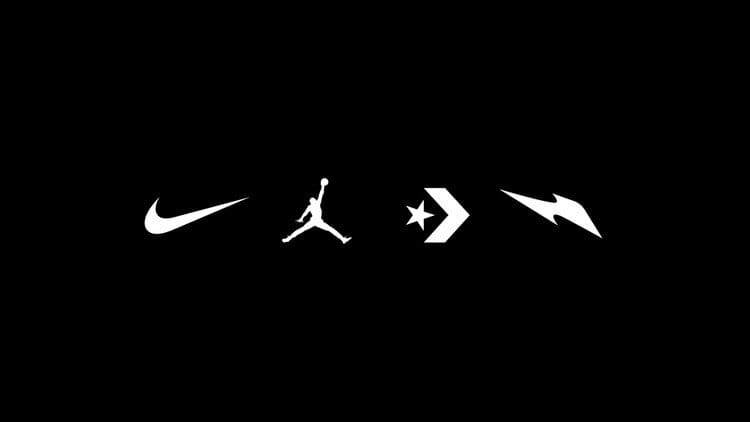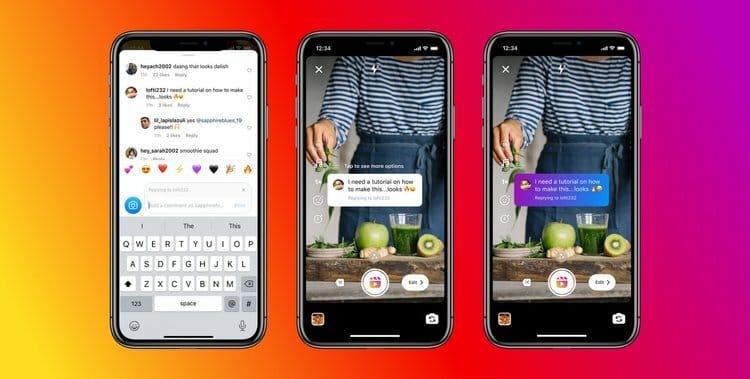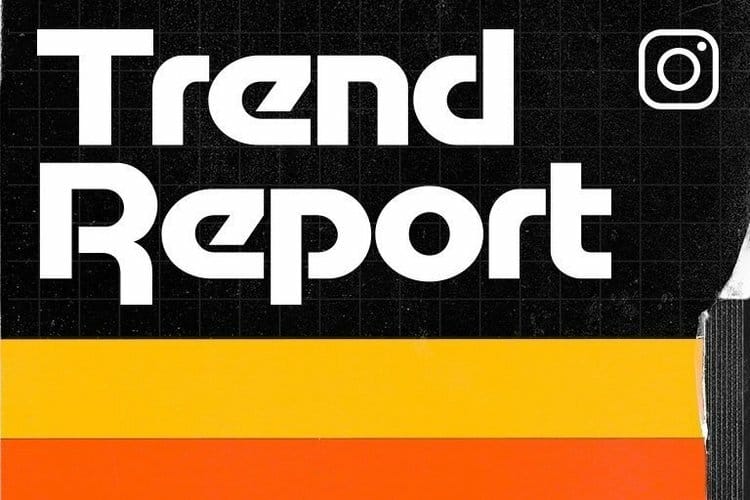
Happy Friday! I’m feeling extra grateful today. Yesterday, Mavrck announced a $120 million investment from Summit Partners to redefine influencer marketing into social proof at scale.
It’s been exciting to be part of this company for the last three years and I’m even more excited to see what we do in the next three years.
If you or anyone you know is interested in helping us on our journey, check out the current roles we have open here or feel free to reach out to me directly.
This Week’s Edition:
Nike enters the metaverse with an NFT studio acquisition
Instagram and Pinterest get more like TikTok
Instagram highlights the trends Gen Z are driving
Rotten Tomatoes joins TikTok’s Jump program
Nike Acquires NFT Studio RTKFT

Nike announced the acquisition of RTKFT, an NFT studio that specializes in digital collectibles, including virtual sneakers.
The acquisition marks the most significant move in Web3 by a major brand to date, making it an immediate player in a rapidly-evolving market.
Besides accelerating its digital transformation and serving "athletes and creators at the intersection of sport, creativity, gaming, and culture," Nike has not disclosed any specifics about what role RTKFT will play in its business, but it likely will be significant.
With the acquisition of RTKFT, Nike will be able to bridge the physical and digital worlds.
Below are some ways I think Nike will accomplish this:
Selling both physical and virtual apparel, including digital replicas of existing physical products and products only available in digital form
Collaborating with sponsored athletes to develop virtual signature product collections
Connecting NFTs with IRL and online perks, access, and experiences such as product drops
A leader in the apparel industry, Nike has the chance to mirror that success in the virtual world. By bringing RTKFT onboard, it gains access to creators that are skilled at creating NFTs and have experience cultivating these communities. As creators are usually the centerpiece of brands entering new spaces or industries authentically, this is especially important.
Similar to Facebook's name change to Meta, Nike's acquisition will drive more attention to the metaverse, which will further accelerate adoption. Household brands will be pushed into making significant investments in the space through acquisitions and launching their own divisions.
This combined with projections that global metaverse transactions will reach $42 billion dollars by 2026, suggests that many more brands, creators, and consumers will become involved over the next few years.
Instagram & Pinterest Add Video Reply Features

Instagram and Pinterest have both added features that mirror TikTok's Video Replies feature that launched last year.
On Monday, Instagram launched Reels Visual Replies, which lets creators respond to comments left on Reels with a video. The video response is then displayed as a sticker on the video.
One day later, Pinterest launched Reply With Idea Pins, allowing users to reply to comments through Idea Pin videos.
It has also been reported that Twitter is testing a Quote Tweet with Reaction feature where users can react to tweets with videos.
The popularity of TikTok's Video Replies and the copycat nature of social media today has led to Instagram, Pinterest, and Twitter releasing or testing similar features.
Thanks to these features, creators and their audiences can engage and interact in a more personalized, two-way manner. Putting video at the core allows creators and their audiences to share context, add commentary, ask and answer questions, and communicate in a way that isn’t possible through text.
Social media platforms are not only increasing their short-form video offerings, but they are doing so in a way that sparks and encourages more interaction and engagement between users, especially creators, who are key to producing engaging short-form video content.
Reels Visual Replies and Reply With Idea Pins complement a number of recently released features, including Add Yours and Takes, which foster co-creation and community engagement.
It's only a matter of time before YouTube and Reddit, which both support short-form video, launch their own versions.
Instagram Breaks Down Gen Z Defined Trends

Instagram released the first edition of its Trend Report, highlighting trends defined by Gen Z that it says will shape culture.
In order to create the report, Instagram surveyed over 1,200 social media users in the U.S., ages 13-24, about trends such as music, fashion, creators, social justice, beauty, and more.
In the report, the platform highlights the trends, explains what they mean, provides supporting data, spotlights creators driving these trends, and outlines relevant hashtags.
The following are some noteworthy trends and data points:
Are Our Carts Finally Ready For Social & AR Shopping: Over 1 in 4 (27%) teens and young adults are expecting to shop directly through social media feeds and special in-app features
Creators Have Risen To The Level Of A-List Celebrities: 4 out of 5 young people agree that “social media and other online celebrities have more influence on cultural than traditional celebrities”
Games Are New Mall: About 3 in 10 expect to live stream others playing games
Marketers can use the new Instagram report to better understand the key movements led by Gen Z, and how they will spill over into the years to come. These data-driven resources can help marketers determine how to show up on the platform in order to reach Gen Z audiences, who account for over 30 percent of Instagram users.
Whether marketers are creating their own content or working with creators on sponsored content, building content strategies around relevant emerging trends can be an effective way to appeal to the historically hard-to-reach Gen Z demographic.
TikTok Lets Creators Make Movie & TV Content More Actionable

Rotten Tomatoes has joined a growing list of companies taking part in TikTok's Jump program, which enables developers to integrate third-party applications into TikTok.
Now when creators upload videos on TikTok, they can link to movie and TV trailers, ratings, reviews, cast information, and other content from Rotten Tomatoes.
Besides movie and TV show clips and audio being popular on TikTok, countless creators have built communities around sharing movie- and TV-related content, making it a valuable integration.
They can now use this integration to inform, entertain, and engage their audiences in a more meaningful manner, make their content more actionable, and provide useful additional information.
Platforms have traditionally restricted brands from driving outside the app unless they advertise, but TikTok is taking a different approach by allowing brands to drive to their owned channels through creators.
Although integrations take users away from the app, there are benefits for everyone, including TikTok.
TikTok strengthens its relationship with brand partners by giving them access to built-in communities, creators get a new way to engage their audiences, and users are provided with more content they like.
It's my prediction that TikTok will expand its Jump program with more retailers and add e-commerce capabilities to increase social commerce on the app.
For brands and creators, this could open up new revenue opportunities, such as allowing creators to earn commissions from sales they generate through Jump integrations.
Quick Hits

Instagram now offers users the option to embed their profiles on websites. For years, users have been able to embed specific posts on their websites, but now they can embed a miniature version of their profile. This is helpful for brands and creators who want to showcase their profiles outside of the app.
Meta added new comment moderation and creator support tools. Facebook creators now have improved options for hiding unwanted comments, keyword blocking, support through live chat, and more.
Meta expanded access to Spark AR Go. The app is designed to help creators express themselves through AR and extend their personal brands, assets, and creative vision to their fans in new ways.
TikTok announced new updates for its camera and editing features. Updates include green screen GIFs, a Visual Enhancement button, musical and animated voice effects, and high-quality video uploads.
TikTok is building the TikTok Measurement Academy. The program is aimed at educating agencies on best practices and how to implement TikTok's latest measurement solutions to show the value of TikTok ads to clients.
TikTok added a payment feature for TikTok Creator Marketplace. Brands can now pay creators and keep track of expenses for branded content campaigns directly in TTCM
YouTube is testing Places Mentioned. Previously, video creators had to manually include Text Map links in their descriptions to share more information about the places they talked about. But, now for food and drink-related videos, this feature will automatically display information for places mentioned through visuals, when detected.
YouTube is experimenting with a revamped channel interface. The experiment puts key channel details at the forefront, resulting in a cleaner viewing experience.
Twitter added auto-captions for videos. To make videos more accessible, captions will be automatically added to video uploads.
Twitch rolled out a new feature that allows streamers to see why viewers have unsubscribed from their channel. Within their Channel Analytics page, streamers can access aggregated and anonymous information on subscription cancellations that can be used to refine their channel strategies to keep subscriptions high.
Snap announced it has paid 250 million dollars to over 12,000 creators as part of its Spotlight program. At one point, it paid a million dollars to creators a day but has since scaled back to discourage creators from making copycat content to go viral. Early payouts have paid off as the company says that creators are posting three times more frequently to Spotlight than they were when it was first launched.
Google's Area 120 has entered the link-in-bio market with a new tool called Qaya. The tool offers creators digital storefronts that connect to YouTube merchandise shelves, Google search, and Google Shopping, with a variety of customization options and settings.
Spotify launched user ratings for podcasts. As of this week, listeners will see a five-star rating system on podcasts to help them decide when to try out a new show.
Spotify acquired Whooshkaa, a podcasting tech company that transforms radio into on-demand audio. The acquisition is part of Spotify's mission to extend its podcast offering for advertisers, creators, and listeners.
What I’m Reading
Mavrck raises 120 million to scale its influencer marketing platform (TechCrunch)
Brands and Creators See the Benefits of a Like-Free Instagram (Adweek)
‘Connect the dots with publishers’: Walmart is doubling down on livestream shopping with a new TalkShopLive partnership (Modern Retail)
Say goodbye to your favorite podcast promo codes (The Verge)
